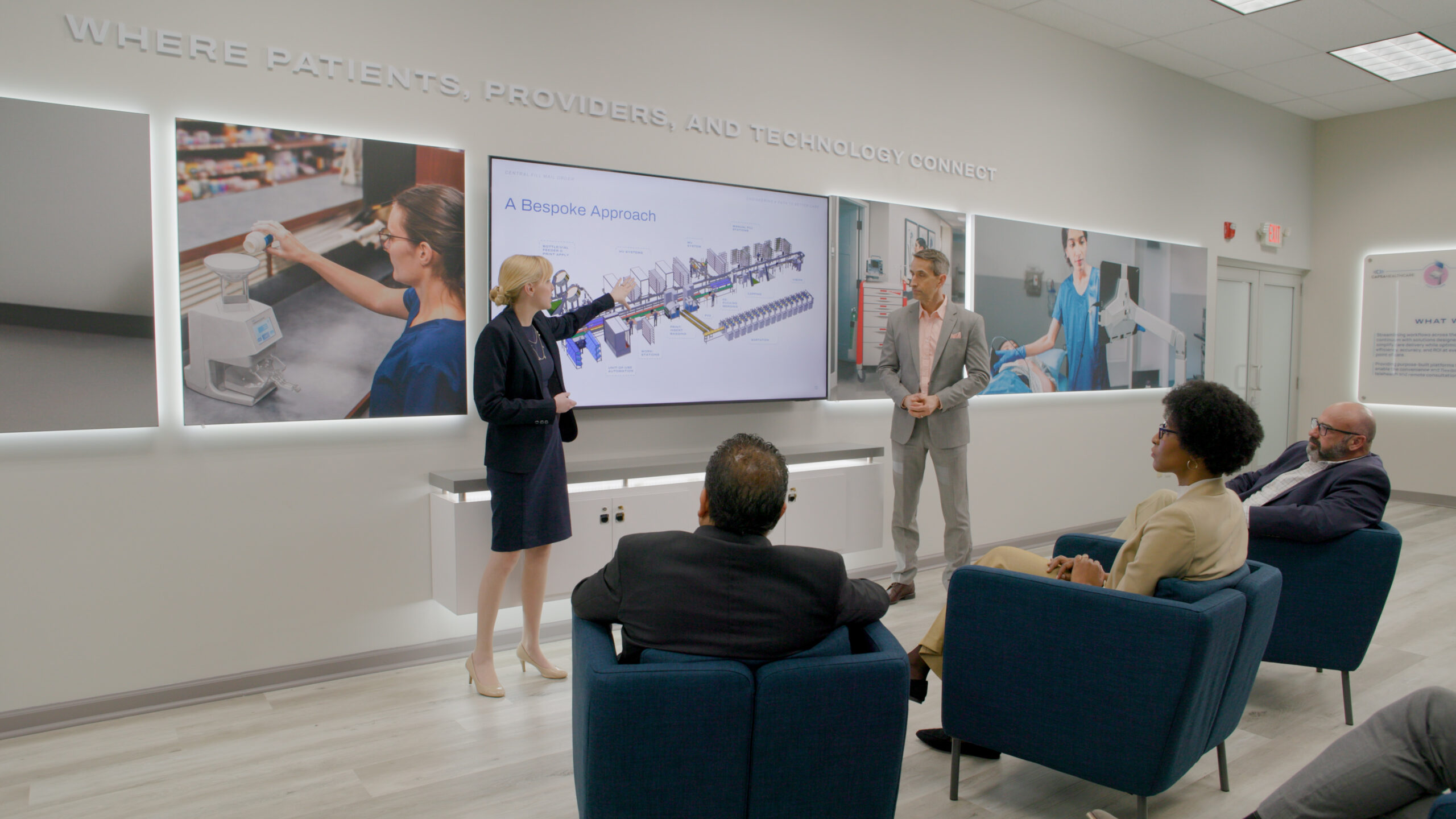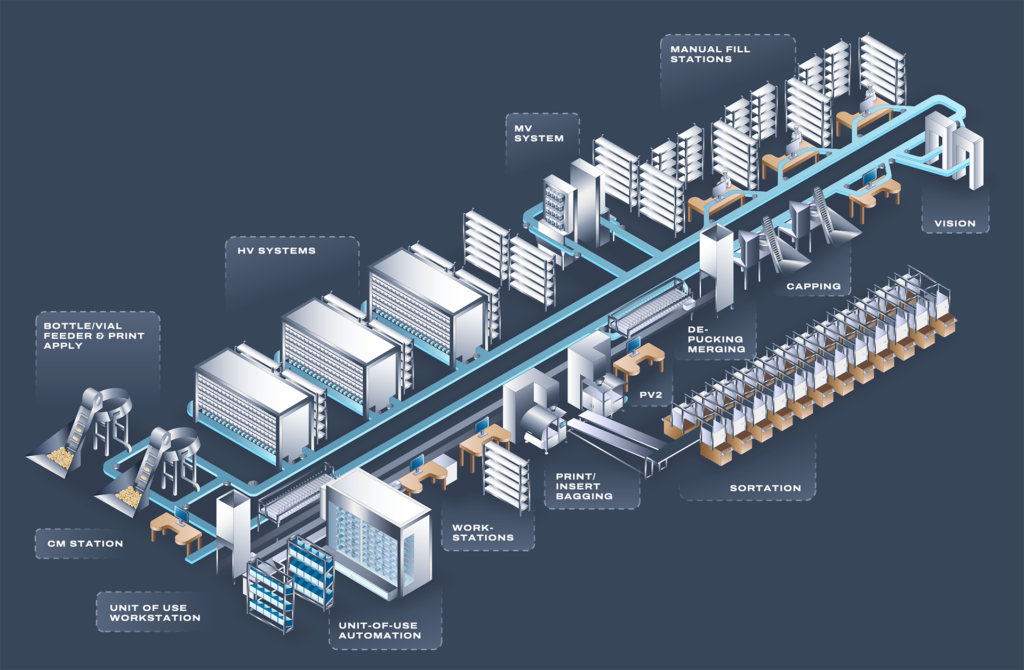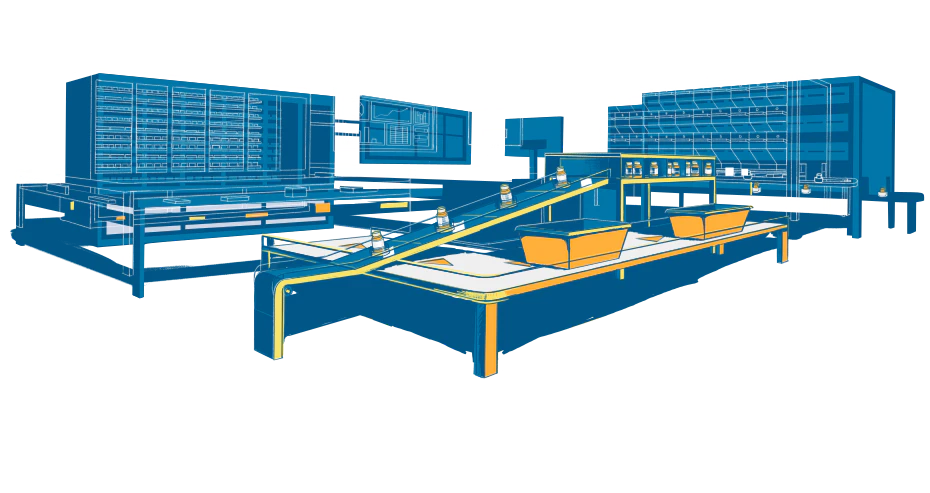
Central fill pharmacy operations are under increasing pressure to perform with greater speed, accuracy, and efficiency. By 2028, prescription volumes are projected to rise 10-12% while the healthcare workforce deficit is expected to exceed 100,000 workers. In the meantime, brick-and-mortar pharmacies are closing at an unprecedented rate. To meet these challenges, pharmacies must maximize efficiency across all dimensions: every square foot of space must optimize prescription throughput, every labor hour must generate optimal value, and operational reliability must approach 100% with minimal maintenance requirements. Perhaps most critically, central fill pharmacies must be able to scale quickly, efficiently, and cost-effectively to meet rapidly growing demand.
In this challenging and competitive environment, pharmacy executives are rethinking their approach. A one-size-fits-all solution no longer suffices. Leaders are seeking innovative partners who can help them respond to present needs while preparing to scale as demand evolves.
Capsa Healthcare’s approach to solution design is rooted in our fundamental belief that engineering excellence begins with collaborative partnership. Unlike vendors who develop preconfigured solutions, we initiate each project by understanding the unique operational challenges and workflows of our clients.
“We develop solutions specifically for central fill through a collaborative process,” explains Pablo Arias, Director of Program Management at Capsa Healthcare. “Our systems are not modified retail solutions adapted for central fill, but purpose-built designs created through partnership with pharmacy operators.”
This collaborative approach is formalized in our C.A.P.S.A. framework:
Randy Ward, President of RxWorkz, confirms: “The partnership with Capsa Healthcare is distinctive—they’re always receptive to our needs and help us make changes that improve the product not just for us but for the entire industry.”
This partnership-driven engineering delivers measurable advantages. Our solution achieves 3.55 scripts per square foot compared to the industry standard of 1-1.5, significantly enhancing space utilization. Labor efficiency improves dramatically with an 82% reduction in replenishment time—requiring only 5 replenishments for 10,000 tablets versus 44 in legacy systems. Additionally, our cell-based architecture eliminates the single points of failure that plague robot-arm systems, enhancing overall reliability.

Our approach begins with comprehensive prescription velocity analysis—conducted in partnership with pharmacy operators—which typically reveals that 80% of prescription volume comes from just 20% of SKUs.
This insight drives our three-tiered design methodology:
By directing automation resources precisely where they deliver maximum impact, this approach optimizes both capital allocation and operational efficiency.
Our central fill solutions are built around two key technological innovations. The High-Volume Counting Cell delivers unparalleled throughput, capable of processing hundreds of prescriptions per hour with individual cell redundancy for system-wide resilience. Its self-calibrating software automatically adjusts to different medication types, ensuring consistent performance across varying formulations.
For unit-of-use medications, our automated unit-of-use dispenser processes 6 medications in just 8 seconds, achieving throughput of up to 10,800 packages per hour. The system handles up to 1,800 distinct medications, including seamless cold chain integration for temperature-sensitive products. This technology now processes 70% of the Netherlands’ prescription volume (17.7 million residents), demonstrating its scalability and reliability.

Healthcare demands continue to intensify, and Capsa’s collaborative engineering delivers adaptability through a truly modular central fill design. While competitors offer rigid solutions requiring wholesale replacement for expansion, our architecture serves as a flexible foundation enabling pharmacies to grow at their own cadence and scale.
This modularity stands as a defining market differentiator. Through a collaborative design process, Capsa engineers solutions recognizing that prescription volumes at launch will differ substantially from volumes 12-24 months into operation. Each solution anticipates this growth trajectory from the start.
The modular architecture yields quantifiable benefits:
For pharmacy leaders managing specific budget parameters, this modularity transforms automation investment strategy. Rather than requiring comprehensive implementation initially, Capsa’s design permits starting with core components—such as two high-volume cell banks—and integrating additional capacity at planned intervals as volume and ROI justify expansion.
This strategic design ensures central fill operations can efficiently meet rising prescription demand without the disruption and capital burden of system replacement—a vital advantage in today’s challenging healthcare landscape.
Contact us today to begin developing your custom central fill solution.
Want to experience Capsa’s approach? Come see our solutions in action at our new Innovation Center.